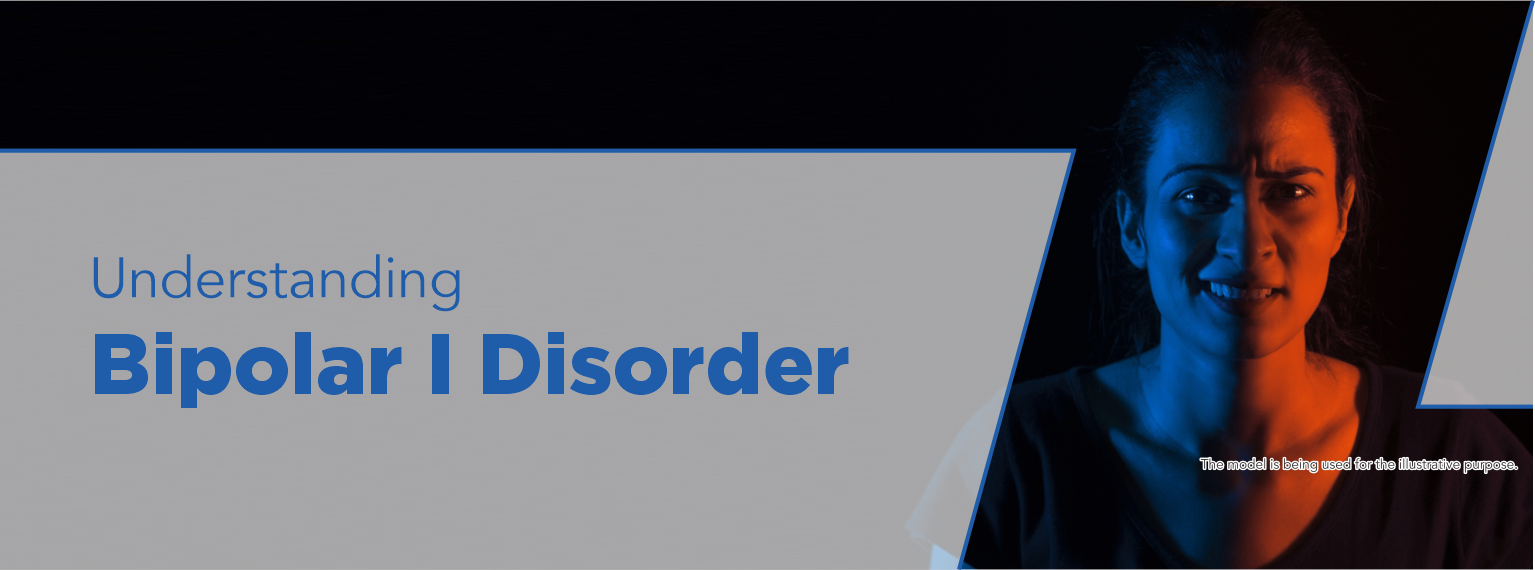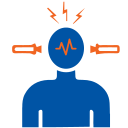
What is Bipolar I Disorder?
Bipolar I disorder is a type of bipolar disorder. It is a chronic or episodic (which means occurring occasionally and at irregular intervals) mental disorder. It can cause unusual, often extreme and fluctuating changes in mood, energy, activity, and concentration or focus. Bipolar I disorder is sometimes called a manic-depressive disorder or manic depression, which are older terms.
Everyone goes through normal ups and downs, but bipolar I disorder is different. The range of mood changes can be extreme.
In manic episodes, an individual might feel very happy, irritable, or “up,” and there is a marked increase in activity level. In depressive episodes, an individual might feel sad, indifferent, or hopeless, in combination with very low activity level. Some people have hypomanic episodes, which are like manic episodes, but less severe and troublesome.
Bipolar I disorder may lead to family discord, job loss, and even suicide. However, the right treatment can help to achieve better outcomes.
What causes Bipolar I Disorder?
The exact cause of Bipolar I Disorder is unknown. However, medical research suggests that there is no single cause. Instead, a combination of factors may contribute to bipolar I disorder, viz., Genes explained by heredity; change in brain structure and function.
Bipolar I disorder often runs in families. If you have a family history of bipolar I disorder, be sure to let your healthcare provider know.
When do the "symptoms" of Bipolar I Disorder appear?
Most of the time, Bipolar I Disorder develops or starts during late adolescence (teen years) or early adulthood. Occasionally, symptoms can appear in children. Although the symptoms may vary over time, bipolar disorder usually requires lifelong treatment.
What are the symptoms of Bipolar I Disorder?
Bipolar I disorder can cause unpredictable high and low mood swings, also known as manic (ups) and depressive (downs) episodes.
It’s impossible to predict how long mood episodes may last. You might be severely depressed for a brief or extended period of time before entering into a manic episode. Mania could last anywhere from days to months as well. You may even experience manic and depressive symptoms at the same time, which is known as a mixed episode.
Spectrum of Symptoms
Manic Episode
- Behaving impulsively
- Feeling jumpy or wired
- Feeling like your thoughts are coming very fast
- Becoming more active than usual
- Having higher than usual energy levels

- Being agitated, irritable, or touchy
- Not feeling tired or needing little sleep
- Talking really fast about a lot of different things
- Thinking you can do a lot of things at once
- Feeling overconfident in your abilities
Depressive Episode
- Sad mood (most of the day, nearly every day)
- Having trouble concentrating
- Feeling like you can't enjoy anything

- Forgetting things a lot
- Having trouble sleeping
- Change in appetite
- Thinking about death or suicide
Mixed Episode
A mixed episode is when you experience symptoms of manic episode (ups) and depressive episodes (lows) as mentioned above, at the same time.
What triggers a mood episode in Bipolar I Disorder?
In bipolar I disorder, mood episodes can seem random. However, both depressive and manic episodes can be triggered by several factors.
Being aware of your triggers or warning signs can help you in managing your mood episodes.
Common triggers for Bipolar I Disorder may include:

How is Bipolar I Disorder diagnosed?
Bipolar I disorder can go unrecognized for years by not only those who suffer with it, but by family, friends, and even healthcare providers.
To diagnose bipolar I disorder, a doctor or other healthcare provider may:
- Complete a full physical examination
- Undergo medical tests to rule out other illnesses.
A psychiatrist or other mental health professional diagnoses bipolar I disorder based on the symptoms, life course, and experiences of the individual.
How is Bipolar I Disorder treated?
Treatment helps many people, even those with the most severe forms of bipolar I disorder. Doctors treat bipolar I disorder with medications, psychotherapy, or a combination of treatments.
Medication
There are several types of medication which can help. People respond to medications in different ways, so the type of medication depends on the patient. Sometimes a healthcare professional needs to try different medications to see which works best.
Psychotherapy
Different kinds of psychotherapy, or “talk” therapy, can help people with bipolar I disorder. Therapy can help them change their behaviour and manage their lives. It can also help patients to get along better with family and friends. Sometimes therapy involves family members.


